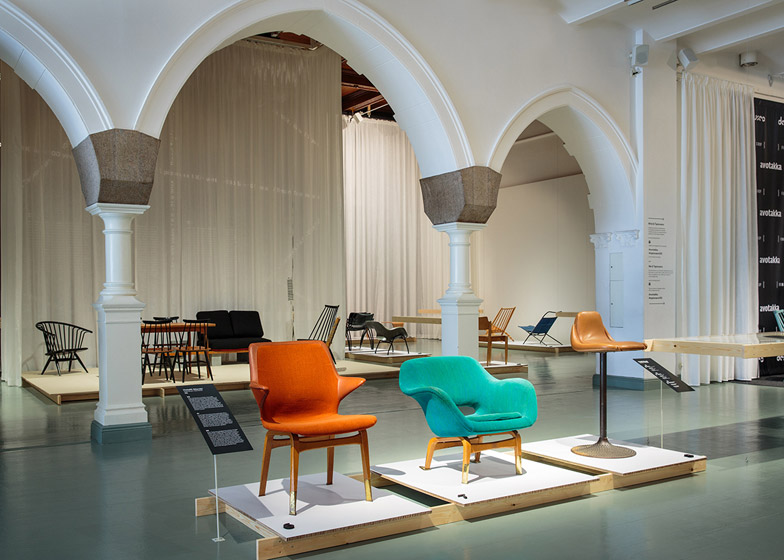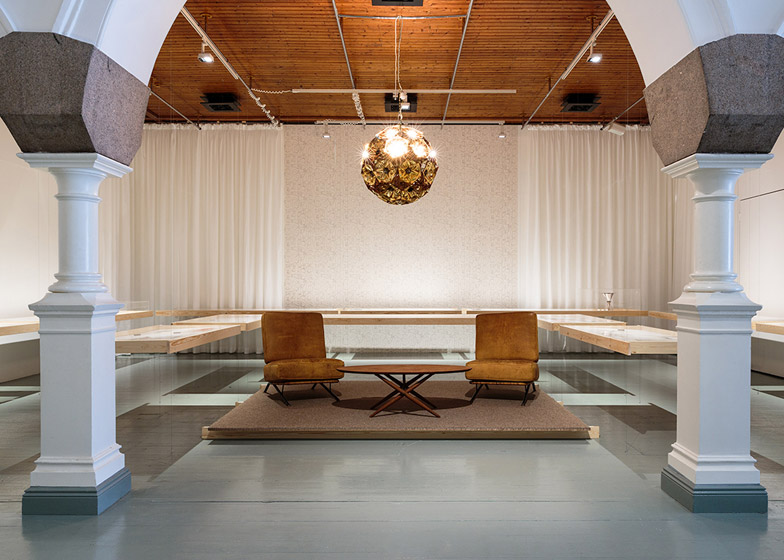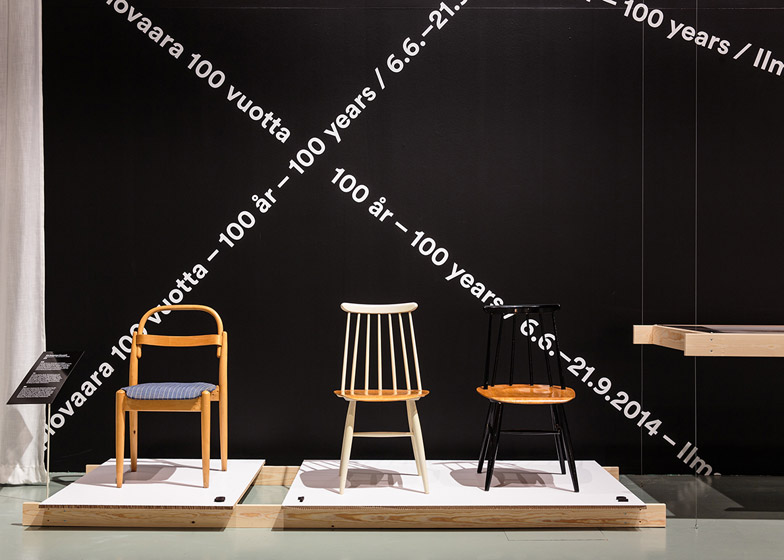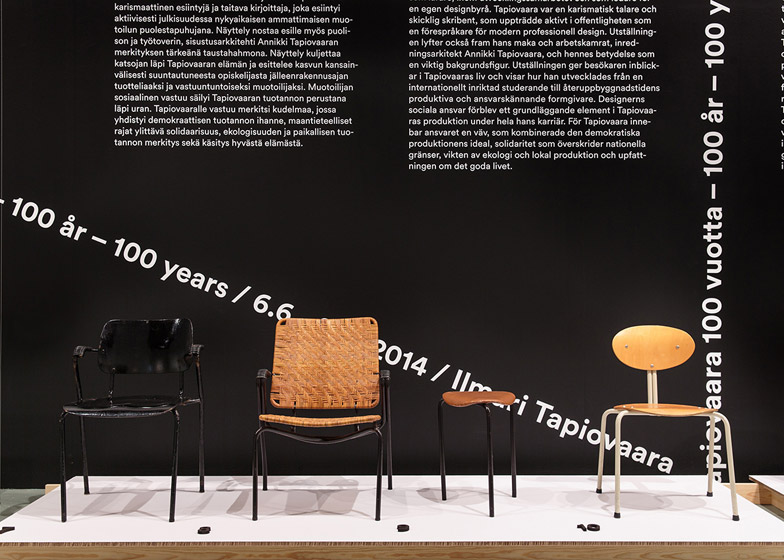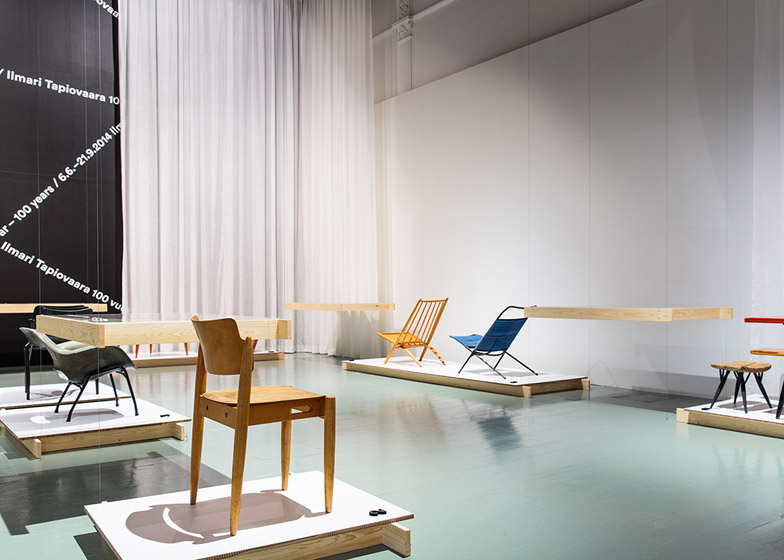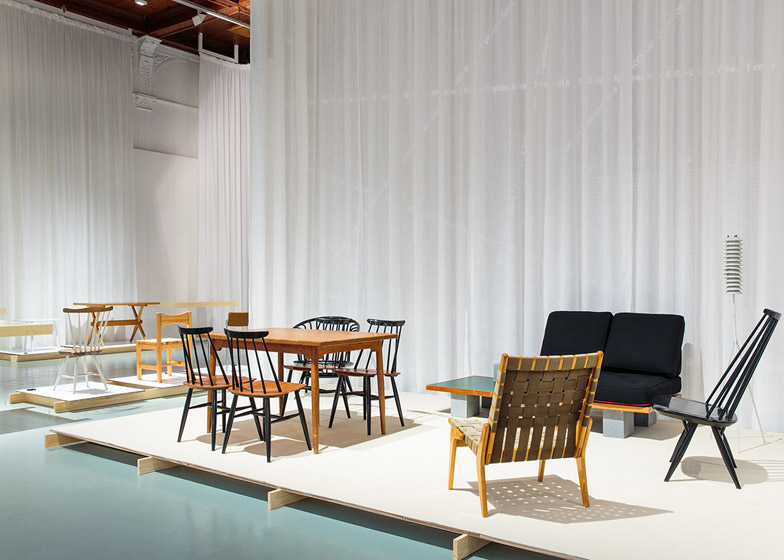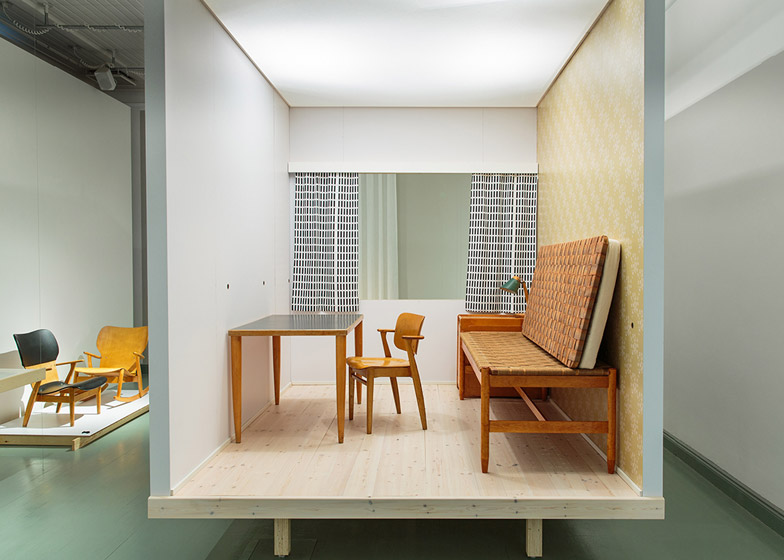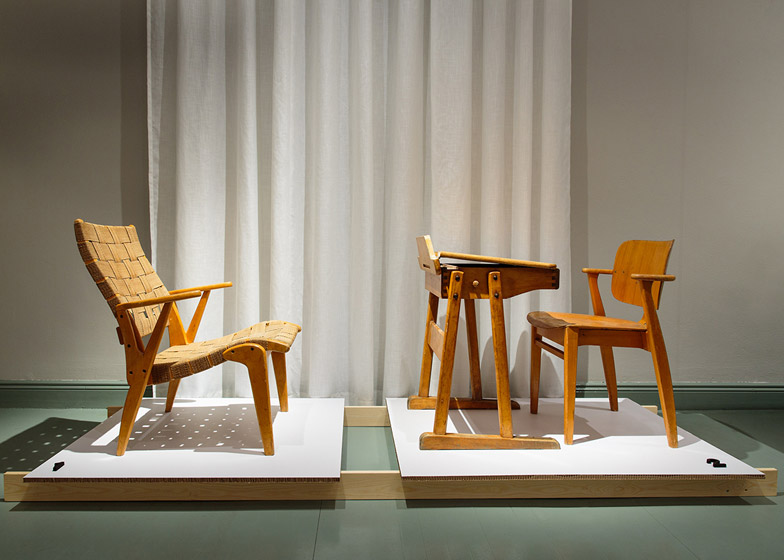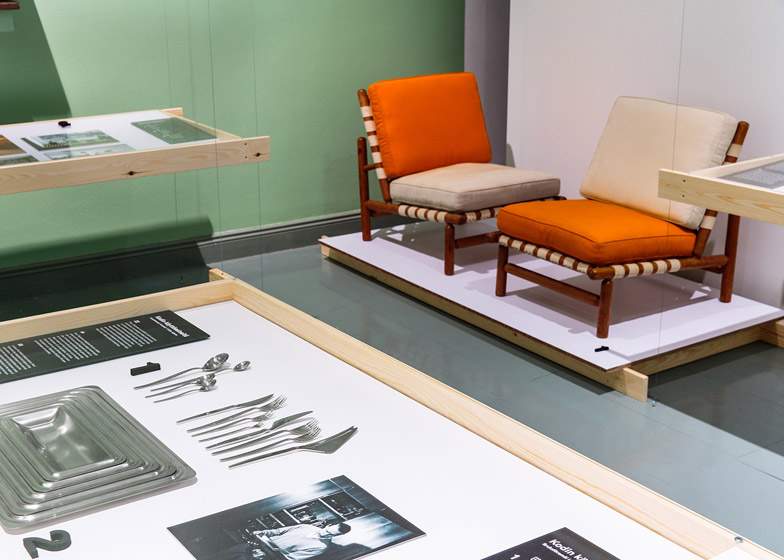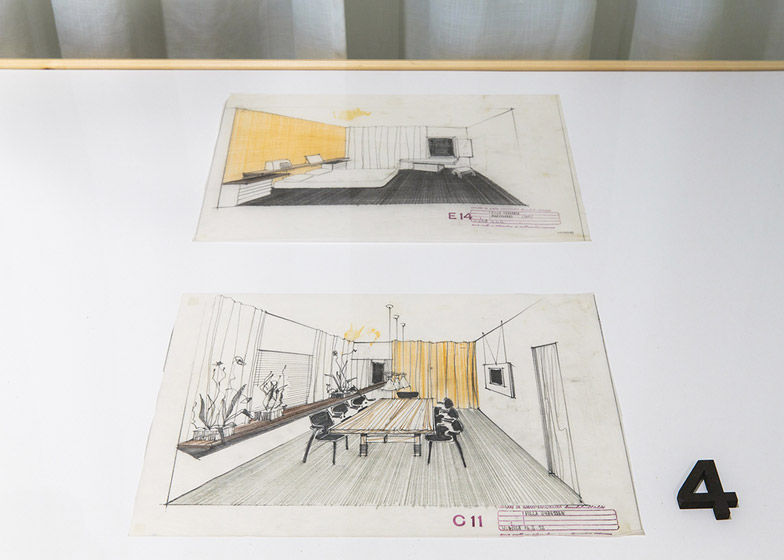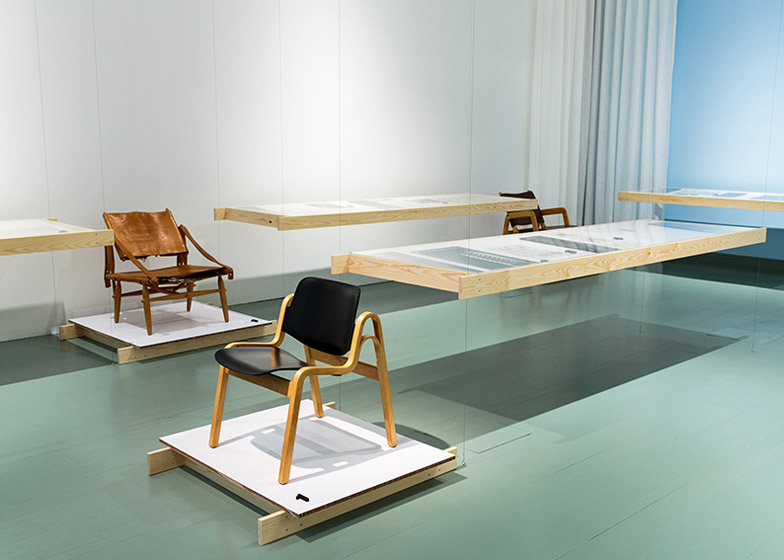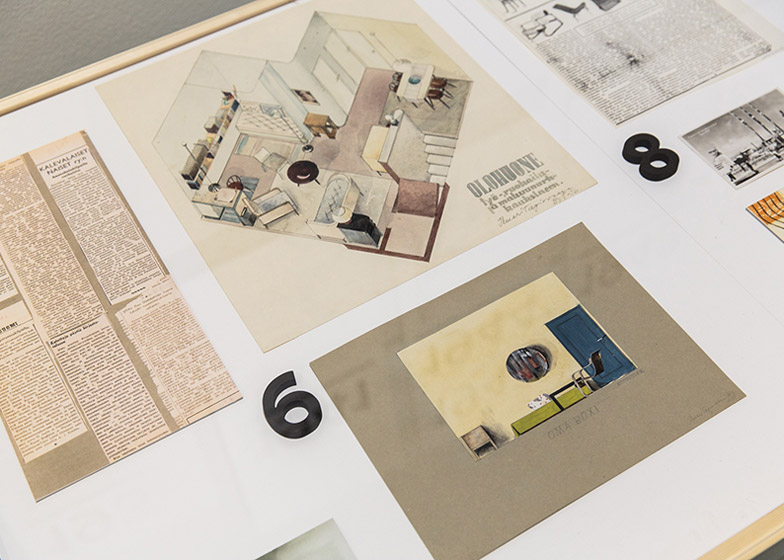The Design Museum in Helsinki is hosting a retrospective of work by Ilmari Tapiovaara to raise the profile of the Finnish Modernist furniture and interior designer out from Alvar Aalto's shadow (+ slideshow).
Marking the centenary of Ilmari Tapiovaara's birth, an archive of furniture and drawings by the designer has gone on display at the Design Museum.
Tapiovaara, who died in 1999, originally trained as an interior architect and later became a prolific designer whose ideas focused on democratic design during Finland's post-war era.
"Tapiovaara wanted good design for everyone," the museum's director Jukka Savolainen told Dezeen. "He did Ikea before Ikea, good quality pieces at an affordable price – the same kind of packaging and mass production ideas as Ikea has done."
Although never gaining the same reputation as his fellow Finnish designer and predecessor Alvar Aalto, Tapiovaara shared similar principles – that design should be for everyone and not just the rich.
"Ilmari Tapiovaara might be the second best-known Finnish furniture designer after Alvar Aalto, but is surely the number one regarding the issues on designer's social responsibility," chief curator Suvi Saloniemi told Dezeen. "Alvar Aalto, who was the idol of Tapiovaara, set the standards for democratic design thinking in Finland, but it was Tapiovaara who developed them in full scale in post-war Finland, suffering from severe austerity."
After graduating in 1937 from the department of furniture design at Helsinki's Central School of Applied Arts, Tapiovaara worked as an assistant for six months at Modernist architect Le Corbusier's office in Paris.
A year later he began work as artistic director and designer at Asko Oy, then the largest furniture manufacturer in Finland.
The Second World War put his career on hold, but his efforts to provide affordable furniture for the public after the event were significant.
"After the war, society was in bad shape and Finland had huge debts to Russia," Saloniemi explained. "There was no glamour in the design profession at that time, they just needed to rebuild the nation."
Even though he worked internationally and many of his chairs are easily recognisable, his name and some of his other design work are not well known outside his home country.
"He's so iconic in Finland," said Saloniemi. "Finnish people know his chairs and only his chairs, everyone sat on his chairs at school. We wanted to highlight the fact that he also did a lot of graphic design, interiors – from Olivetti stores to pubs in the Finnish countryside."
Designed by Henri Halla-aho, the exhibition is located across the first floor of the museum.
The main space includes drawings and photographs of public interiors alongside selected furniture pieces designed between 1938 and the early 1970s.
The first of four corner rooms includes a timeline of his personal objects and drawings from design school and his early years.
Another room is dedicated to iterations of the stackable 1946 birch plywood Domus chair, which packed into very small crates and was exported in millions to the US.
"It was one of his most famous, most produced and most reproduced chairs," said Saloniemi. "I heard you can still find the chairs in Texas gas stations and similar places."
The next space is filled with drawings of his private residential projects and domestic items, including toys made from material left over from Domus chair production. "He didn't waste any material, he was really strict with his ecological ideals," said Saloniemi.
The final room focusses on export, including his 1950s work in Paraguay where he designed chairs using rainforest wood.
"We wanted to portray him as a democratic designer and that he kept design and social responsibility really close to his heart," Saloniemi said.
Finnish furniture brand Artek acquired the rights to produce and sell Tapiovaara's work at the same time the company was bought by Vitra last year.
"There is definitely a comeback of Nordic design and there is a renewed appreciation of Aalto's work," said Rolf Fehlbaum, who sits on Vitra's board of directors. "Tapiovaara of course is much less known internationally, and it is high time that he be discovered."
The exhibition is open until 21 September. Images are courtesy of Helsinki Design Museum.

